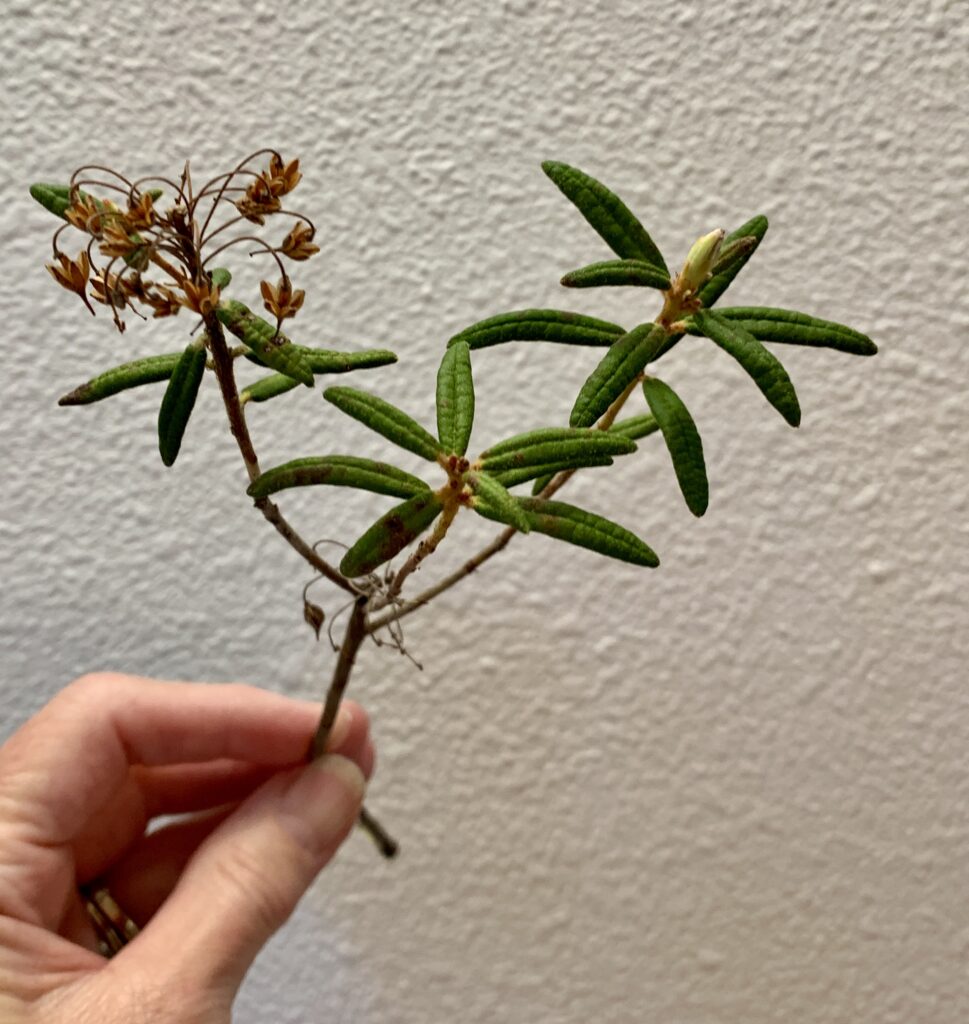Good Morning from Seward, Alaska! I’m excited to be joining this class and all of you on this learning journey. It has been a VERY LONG TIME since I participated an introductory level Biology course and my first related specifically to Alaska flora. I was accepted into the UAF Ethnobotany program and this class is a requirement for that program. I am looking forward to the in-depth learning we’re about to engage in.
I came to Alaska in 1983 as a young teacher. My goals at that time were to experience life and to teach in at least two different cultures/rural communities before settling into work and life on the Kenai Peninsula. What a journey it’s been. I retired from classroom teaching 19 years ago, but my love of living, working, and exploring in and around Alaska continues. I’ve wanted to experience learning through the Ethnobotany lens for quite awhile and the time is now right. So, here I am!
Labrador tea has been a favorite plant of mine since my college days of guiding Summer canoe trips for youth in Canada. I also chose to focus my first plant profile project for EBOT 100 on Labrador tea. I’m attaching a photo of some Labrador tea that I picked two weeks back while working in the village of Chistochina.
My foraging/harvesting of wild plants has been limited to various berry species and Labrador tea. I do have a fairly decent-sized garden which we enjoy harvesting, eating fresh, and preserving for the Winter months ahead.

Northern Labrador Tea (Rhododendron tomentosum Harmaja Ericaceae)


Welcome Kristie,
glad you are enjoying the summer, and are working towards your OEC in Ethnobotany, what a great program. Labrador tea is such a cool plant, I cannot get enough of seeing these in flower and smelling the leaves after a rain. A closer look at the flowers shows a the ovary and the glandular trichomes and the stamens crowded in bud and slowly unfolding upon elongation of the corolla until they eventually swing open when the petals have reflexed. The orange hairs on the abaxial (underside) side of leaves are really amazing as well, they look a bit like velcro threads, tightly interwoven.
Hi Steffi,
Thank you for sharing this new information, and the pictures, about Labrador tea. I feel like I am just starting out on a whole new adventure in learning with this class!